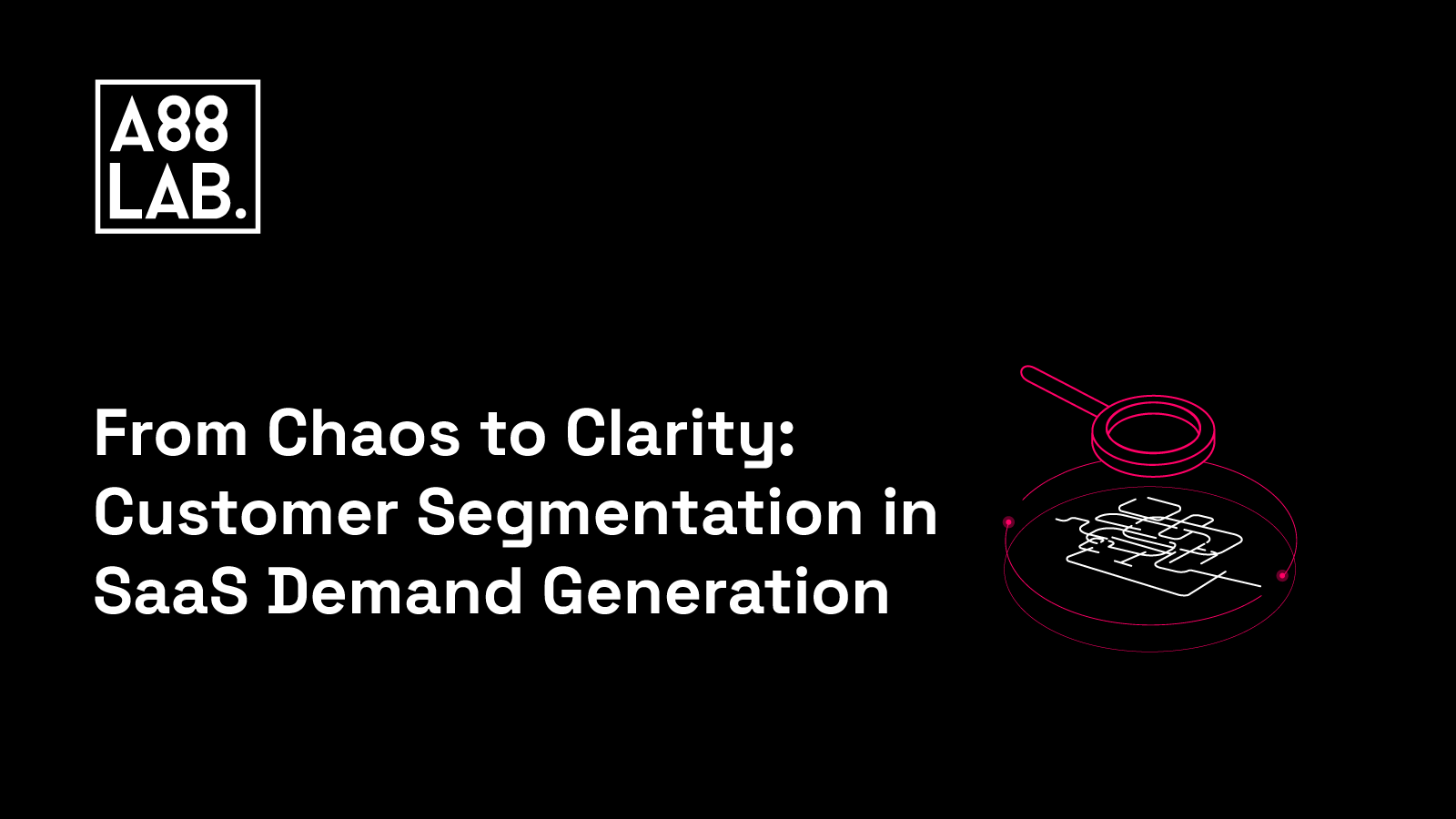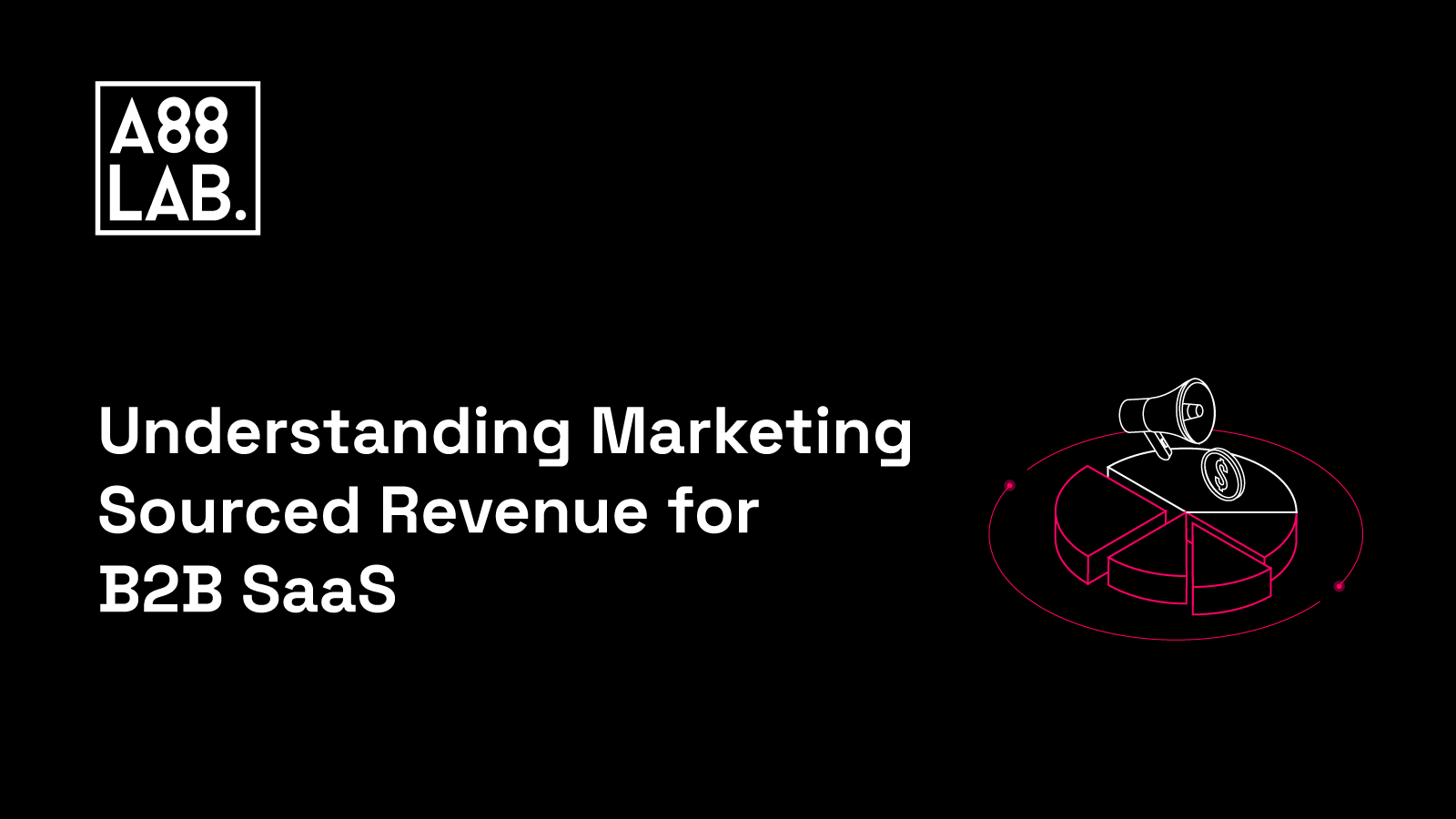In the fast-paced and competitive landscape of B2B SaaS, the pressure from investors and the desire for immediate results can often lead companies to prioritize Demand Capture over Demand Creation. While capturing existing demand can yield short-term gains, it is essential for B2B SaaS companies to recognize that true success lies in the art of demand creation itself. By proactively identifying unmet needs, understanding customer pain points, and providing innovative solutions, companies can effectively carve out their market share and pave the way for sustainable growth.
Demand creation involves the strategic process of generating interest, awareness, and desire for a B2B SaaS offering. It is a proactive approach that focuses on creating customer demand rather than solely relying on capturing existing demand. By engaging in demand creation, companies not only stimulate market interest but also position themselves as thought leaders and industry innovators. This not only helps differentiate them from competitors but also establishes a strong foundation for capturing quality demand in the long run.
By conducting thorough customer analysis, delivering valuable content, building communities, tracking relevant metrics, and crafting targeted messages, CMOs, product marketers, and heads of growth can successfully create demand and achieve sustainable growth in the long run.
Unveiling the Path to Demand Creation
To embark on the journey of creating demand, it is essential to gain a deep understanding of your customers and their needs. By analyzing customer data and conducting comprehensive research, you can uncover valuable insights that will drive your demand creation efforts. Things like:
- Surveys
- Customer interviews
- Shadowing sales calls
- Conversations with Sales Development Representatives (SDRs) and Business Development Representatives (BDRs)
provide direct access to customer perspectives and pain points. These interactions offer invaluable information that can be used to refine your product offerings, address customer challenges, and tailor your messaging accordingly.
Furthermore, your CRM system is a treasure trove of customer data, enabling you to identify gaps, challenges, and opportunities. By analyzing customer interactions, purchase patterns, and support requests, you can gain deeper insights into their needs and preferences. This information will guide your decision-making process and help you develop content and campaigns that truly resonate with your target audience.
Crafting Customer-Centric Strategies
Once armed with a deep understanding of your customers, it's time to craft customer-centric strategies that differentiate your brand from the competition.
By aligning your messaging with customer pain points and challenges, you can position your B2B SaaS product as the ideal solution. Utilize customer feedback and testimonials to enhance your product-market fit and ensure that your offerings meet customer expectations.
For example, let's consider a B2B SaaS company that provides project management software, like Basecamp. Through customer research and feedback, they might discover that their target audience struggles with collaboration and task management across remote teams.
Armed with this knowledge, the company refines its messaging to emphasize how their software streamlines communication, enhances collaboration, and boosts productivity for remote teams. By focusing on solving a specific pain point, they differentiate themselves from competitors and create demand for their solution.
Establishing Thought Leadership Through Impactful Content
Thought leadership through content is a powerful way for demand creation, as it positions your brand as an authority in the industry. Let's explore some of the most important aspects.
Identifying Target Channels: Reaching Your Prospects
When it comes to creating demand, understanding where your target audience resides is crucial. Conduct thorough research to identify the channels that your prospects frequent the most. This could include LinkedIn, Twitter, industry-specific communities, online forums, or even offline events and conferences. By pinpointing the channels your audience prefers, you can focus your marketing efforts and resources in the right direction.
Additionally, it's important to delve deeper into the content consumption preferences of your prospects. Do they prefer reading blog posts, watching videos, listening to podcasts, or engaging in interactive webinars?
By understanding their preferred content formats, you can tailor your marketing messages accordingly, ensuring that they resonate with your audience and capture their attention effectively.
Developing Problem-Solving Content: Adding Value to Your Audience
In today's overwhelming world, customers are struggling to identify solutions to their problems. By creating high-quality educational content that directly addresses their real pain points, you can position yourself as a trusted authority and add value to your audience. This could involve writing blog posts, pillar pages, producing instructional videos, or designing infographics that provide practical insights and step-by-step guidance. Adding screenshots and screenshares that show your work can add value to your content.

Remember, the key is to focus on solving your customers' problems rather than solely promoting your products or services. By offering genuinely helpful information, you establish yourself as a reliable resource and develop a stronger connection with your audience.
More about building trust and relationships through ungated content in our blog post "Ditch the Gate: How to Build Trust and Demand with Ungated Content"
Engaging Prospects Through Educational Interactions: Building Trust and Relationships
Building trust and forming relationships with your prospects is essential for long-term success. One effective way to achieve this is by participating in industry-specific communities, forums, and social media groups. These platforms serve as gathering places for individuals who share a common interest or professional background.
Engage actively within these communities by sharing your expertise, answering questions, and providing valuable insights without a sales-driven approach. By positioning yourself as a helpful resource rather than a pushy salesperson, you can establish credibility and build meaningful connections with your prospects.
Remember, the goal here is not to directly sell your products or services but to genuinely help others. By consistently providing valuable information and being an active participant in these communities, you can earn the trust and respect of your prospects, ultimately leading to stronger relationships and potential business opportunities.
Cultivating Trust and Advocacy Through Community Building
Communities can be a goldmine of valuable insights and feedback that can help you refine your product offerings, positioning, and messaging. By actively participating in community discussions, you can gather firsthand information about the pain points, challenges, and preferences of your target audience.
Engage with community members by joining relevant forums, online groups, or social media communities where your prospects and customers gather. Take the time to listen and understand their conversations, questions, and concerns. This direct interaction allows you to gain deeper insights into their needs, aspirations, and frustrations.
Make use of community feedback to refine your product offerings. By identifying recurring pain points or areas where your product can be improved, you can make informed decisions on how to enhance your offerings to better meet the needs of your target audience. This feedback serves as valuable input for product development and innovation.
Furthermore, community insights can also shape your positioning and messaging strategies. By understanding the language, values, and priorities of your audience within these communities, you can align your messaging to resonate more effectively with them. Pay attention to the words, phrases, and emotions used by community members to communicate their challenges and desires. Incorporating these insights into your marketing messages can help you create a stronger connection with your audience and differentiate your brand from competitors.
Build Your Own Community
Building a community around your brand is an effective way to foster trust, drive engagement, and cultivate advocacy. Consider establishing dedicated online communities on platforms like Slack, Circle, Reddit and Quora.
A great example of such a community is David Gerhardts Exit Five, where B2B marketers can ask questions, share expertise and ideas, exchange knowledge, and network together. There are many tactics related to community building, and we have an entire article on that topic.

Moreover, leveraging user-generated content can further strengthen your community and drive demand. Encourage members to share success stories, case studies, and testimonials showcasing the impact of your B2B SaaS offering. This social proof not only builds credibility but also serves as a powerful tool for demand creation.
Establishing a Connection: Expanding Reach and Influence
By being positioned as authority, you can effectively connect with your target audience and build credibility. Here's how you can leverage various platforms and strategies to achieve thought leadership visibility:
Capitalizing on Podcasts and Webinars: Reaching Your Target Audience
One effective way to reach your target audience is by capitalizing on podcasts and webinars. These aproaches provide opportunities to engage with a focused and engaged audience actively seeking valuable insights.
By participating as a guest in industry-specific podcasts and webinars, you can share your expertise and provide valuable insights, positioning yourself as a trusted authority. This not only expands your reach but also increases brand visibility and credibility.
Co-create With Subject Matter Experts: Amplifying Your Brand’s Authority
Collaborating with recognized industry experts and influencers can greatly amplify your brand's authority. By joining forces with experts through joint content creation, such as co-authored blog posts, videos, or hosting webinars together, you benefit from their established reputation and gain access to their existing audience. This collaboration enables you to tap into a wider network, attract a larger audience, and solidify your position as a thought leader in the industry.
Starting Your Own Podcast: Establishing Industry Influence
If resources allow, consider starting your own podcast. Invite subject matter experts related to your target industry as guests and engage in insightful discussions about industry challenges, trends, and innovative solutions.
By consistently producing valuable podcast content, you provide a valuable resource for your audience and demonstrate your expertise. As your podcast gains traction, your brand gains visibility and recognition, leading to increased awareness and potential business opportunities.
Plus, you can repurpose your podcast content across multiple channels like social media, blog, newsletter etc.
Measuring the Success of Demand Creation
Finally, to ensure the effectiveness of your demand creation efforts, it's crucial to measure key metrics and evaluate your strategies' impact. By tracking and analyzing relevant data, you can refine your approach and optimize your demand creation initiatives.
Some key metrics to consider include:
-
Inbound traffic: Measure the volume and quality of traffic coming to your website or landing pages through organic search, social media, and referrals.
-
Conversion rates: Track the percentage of visitors who convert into SAO (Sales Accepted Opportunities) or customers. Analyze the conversion rates at different stages of the buyer's journey to identify areas for improvement.
-
Social media engagement: Monitor the engagement metrics on your social media platforms, such as likes, comments, shares, and click-through rates. Assess which content types and topics resonate most with your audience.
-
Thought leadership impact: Evaluate the reach and engagement of your thought leadership content, such as blog posts, webinars, or podcasts. Look at metrics like views, downloads, and audience feedback to assess the impact of your thought leadership initiatives.
-
Brand mentions: Monitor online conversations and brand mentions related to your B2B SaaS offering. Assess sentiment and identify areas for improvement in your brand perception.
By continuously monitoring these metrics and analyzing the data, you can identify trends, make data-driven decisions, and optimize your demand creation strategies to drive continuous improvement.
Conclusion
Demand creation is an ongoing process that requires adaptation and refinement. Stay attuned to your customers' evolving needs, industry trends, and emerging technologies to remain ahead of the curve. With the right mindset, strategies, and determination, you can position your brand as a leader in the B2B SaaS space and thrive in the competitive landscape.
.png)


